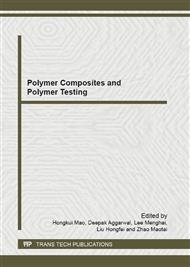p.143
p.147
p.152
p.156
p.160
p.165
p.170
p.174
p.178
The Abstract Device Models and the General Mathematical Models for Energy and Exergy Analyse in Papermaking Mill
Abstract:
There are huge potential energy-saving in the papermaking mill. However the modelling and simulation of papermaking mills currently mainly focus on the material flow in the papermaking process, there are few energy analyses of the whole papermaking mill and even fewer exergy analyses. In order to achieve the goals of energy-saving, this paper presents the basic works before establish the general framework of modelling and online simulation in papermaking mill, which are how to abstract the specific device and construct their corresponding mathematics models, not only for material analyze, but also for energy and exergy analyze, and at the same time, for different materials’ energy and exergy analyze, this paper gives the general mathematics models respectively. Use these models, it can do the energy and exergy analysis of the flux material, such as coal, diesel oil, natural gas, liquefied petroleum gas, water, condensate, dry atmosphere, wet atmosphere, steam, dope, slurry, wet and dry paper etc,. Base on those models, it can establish the specific device mathematical models to diagnose, analyze, optimize and simulate online the energy system of the papermaking factory. For calculating energy and exergy automatically, this paper established the property database of the water, water vapor, dry and wet atmosphere, flue gas, boiler heat dissipation and ash.
Info:
Periodical:
Pages:
160-164
Citation:
Online since:
April 2012
Authors:
Keywords:
Price:
Сopyright:
© 2012 Trans Tech Publications Ltd. All Rights Reserved
Share:
Citation:


